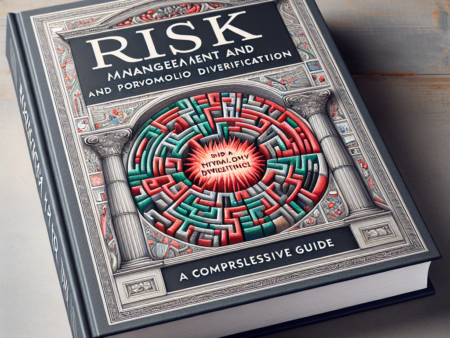Effective Risk Management Strategies for Portfolio Diversification
In the ever-evolving world of finance, managing risk and diversifying your portfolio are paramount to achieving long-term investment success. Whether you’re a seasoned investor or just starting, understanding and implementing effective risk management strategies can safeguard your assets against market volatility and unforeseen economic shifts. This comprehensive guide explores key strategies and actionable insights to help you build a resilient and diversified investment portfolio.
Understanding Risk Management in Investing
Risk management involves identifying, assessing, and prioritizing potential risks to minimize their impact on your investments. Effective risk management ensures that you can withstand market fluctuations and protect your capital from significant losses.
Key Risk Management Strategies
1. Asset Allocation
Asset allocation is the process of distributing your investments across various asset classes, such as stocks, bonds, real estate, and commodities. By diversifying your investments, you reduce the risk associated with any single asset class.
2. Diversification
Diversification involves spreading your investments within each asset class. For example, within your stock portfolio, you might invest in different industries and geographic regions to mitigate specific sector risks.
3. Setting Stop-Loss Orders
Stop-loss orders automatically sell a security when it reaches a predetermined price. This strategy helps limit potential losses by ensuring that emotions don’t drive your investment decisions during market downturns.
4. Hedging
Hedging involves using financial instruments like options and futures to offset potential losses in your portfolio. By taking positions that gain value when your primary investments decline, you can balance your overall risk exposure.
Portfolio Diversification Techniques
1. Geographic Diversification
Investing in international markets can protect your portfolio from country-specific economic downturns. Exposure to different economies can enhance growth opportunities and reduce overall risk.
2. Sector Diversification
Avoid concentrating your investments in a single industry. By investing across various sectors such as technology, healthcare, and finance, you mitigate the risk of sector-specific challenges impacting your portfolio.
3. Asset Class Diversification
Incorporate multiple asset classes into your portfolio. Combining stocks, bonds, real estate, and alternative investments can provide balanced growth and stability.
4. Investment Style Diversification
Blend different investment styles, such as growth and value investing, to capture diverse market opportunities. This approach can enhance your portfolio’s performance across various market conditions.
Implementing Risk Management and Diversification
To effectively implement risk management and diversification strategies, follow these actionable steps:
1. Assess Your Risk Tolerance
Understand your ability and willingness to take risks. Your risk tolerance will guide your investment decisions and asset allocation.
2. Define Your Investment Goals
Set clear, achievable financial goals. Whether it’s saving for retirement, buying a home, or funding education, your goals will shape your investment strategy.
3. Regular Portfolio Review
Periodically review and rebalance your portfolio to maintain your desired asset allocation. Adjust your investments based on performance and changes in your financial situation.
4. Stay Informed
Keep abreast of market trends, economic indicators, and financial news. Staying informed enables you to make proactive adjustments to your portfolio.
Benefits of Effective Risk Management and Diversification
Implementing robust risk management and diversification strategies offers numerous benefits:
- Reduced Volatility: Diversified portfolios are less susceptible to large swings in value.
- Capital Preservation: Protect your investments from significant losses during market downturns.
- Enhanced Returns: Exposure to a variety of asset classes can capture growth opportunities across different markets.
- Peace of Mind: Knowing that your portfolio is well-diversified and risks are managed provides confidence and reduces investment anxiety.
Common Mistakes in Risk Management and Diversification
1. Lack of Diversification
Concentrating investments in a single asset class or sector increases vulnerability to specific risks. Ensure your portfolio is spread across various investments.
2. Ignoring Risk Tolerance
Investing beyond your risk tolerance can lead to emotional decision-making and potential financial distress during market downturns.
3. Overlooking Rebalancing
Failing to rebalance your portfolio can result in an unintended asset allocation, increasing risk exposure.
Conclusion
Effective risk management and portfolio diversification are essential components of a successful investment strategy. By understanding and implementing these strategies, you can protect your investments, enhance returns, and achieve your financial goals with greater confidence. Remember to regularly assess your portfolio, stay informed, and adjust your strategies as needed to navigate the complexities of the financial markets.
Frequently Asked Questions
- What is risk management in investing?
- Risk management in investing involves identifying, assessing, and prioritizing potential risks to minimize their impact on your investment portfolio.
- How does portfolio diversification reduce risk?
- Diversification spreads investments across various asset classes and sectors, reducing the impact of any single investment’s poor performance on the overall portfolio.
- What are some common diversification strategies?
- Common strategies include asset allocation, geographic diversification, sector diversification, and investment style diversification.
- How often should I review my investment portfolio?
- It’s recommended to review your portfolio at least annually or whenever there are significant changes in the market or your personal financial situation.
- Can diversification guarantee profits?
- While diversification can reduce risk and improve the potential for steady returns, it does not guarantee profits or protect against all losses.
Disclaimer
The information provided in this article is for informational purposes only and should not be construed as financial or investment advice. It is always recommended to conduct thorough research and consult with a professional advisor before making any investment decisions.


















